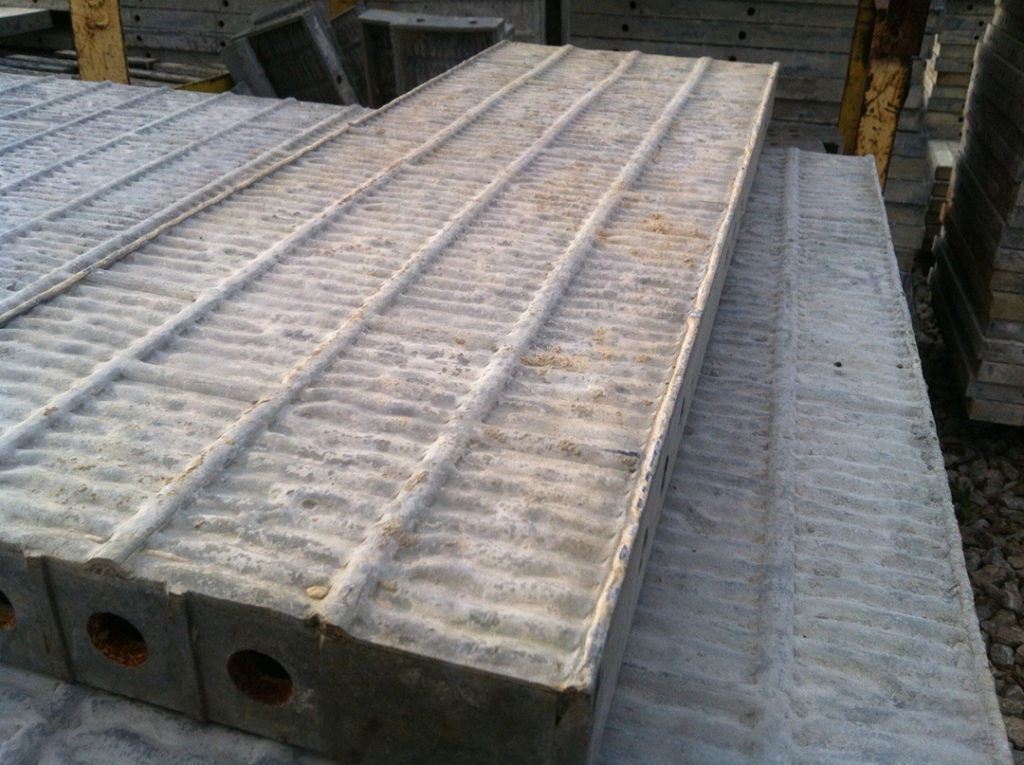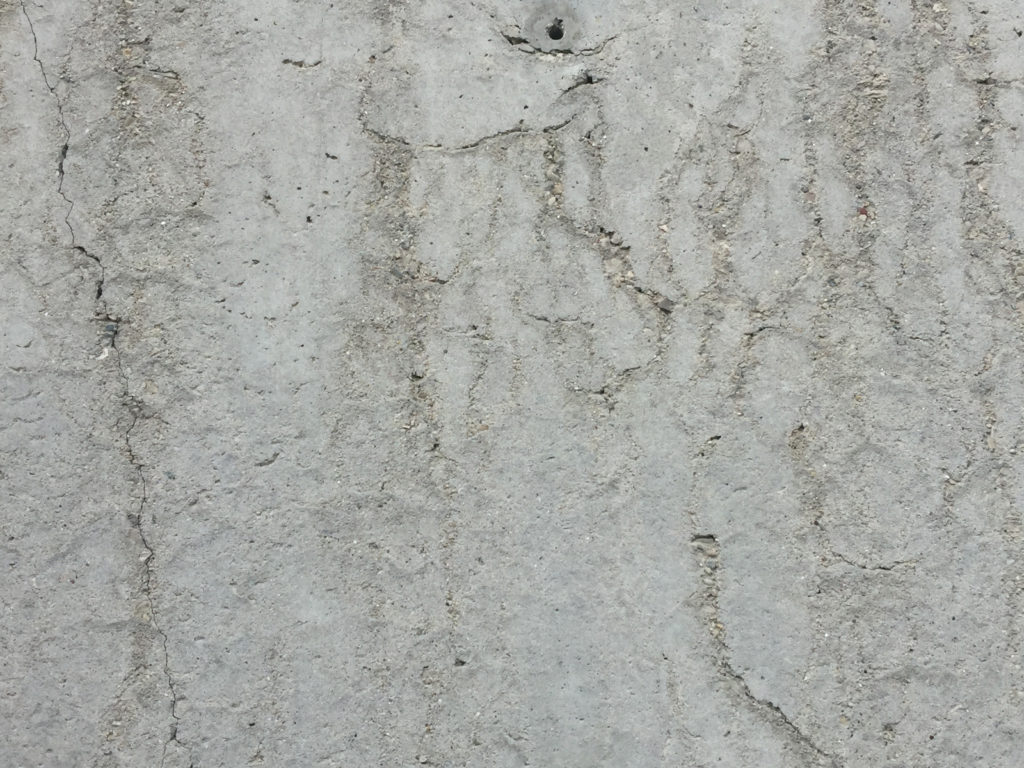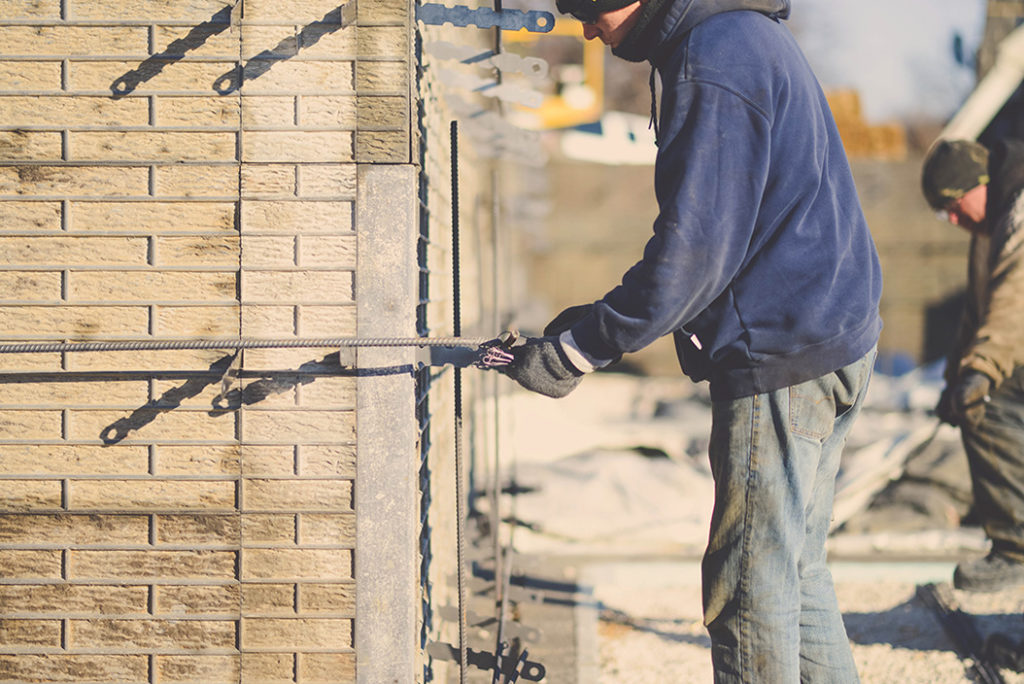What Causes Concrete Build-up on Forms
Part 3 of a 4-Part Series By Destry Kenning, Forming Market Segment Manager, Nox-Crete Products Group
Just about all concrete-forming contractors will tell you that one of the challenges they face on job sites is keeping their forms clean, or, more specifically, preventing concrete buildup on the working faces of their forms.
Theoretically, if you cover the forms with a good coat of a quality form release agent prior to placing concrete against them, you should never have to worry about concrete buildup, right?
Any experienced wall-forming contractor will tell you that projects never seem to work out that way. While contractors hate having the concrete buildup on their forms, they have, in many cases, simply learned to live with it.
Thankfully, the process of inevitable buildup does not need to be this way.
In this article, the focus will be on why concrete buildup occurs. In a subsequent and final article in this series, the focus will be on how to eliminate the buildup when it does occur.
The primary causes of concrete buildup include:
- Unseasoned or improperly seasoned aluminum forms
- Poor-quality form release agent
- Insufficient amount of form release agent or no form release agent at all
- Applying form release agent after forms are set, rather than before they are set
- Form surface abrasion during concrete placement
- Use of a calcium chloride accelerator in concrete cast against aluminum forms
- Early form removal
Editor’s note: Further details on each of these will be addressed in the final part of this article series in March.
SEASONING – As mentioned in the first article in this series, Dealing with the Reactivity of Aluminum Forms and Concrete, aluminum form surfaces must be properly seasoned when new, or re-seasoned following aggressively cleaning them or removing buildup.
Aluminum is very reactive with the cementitious material content. If the aluminum is not properly seasoned, severe buildup will occur from placing concrete against it, irrespective of the presence of a good quality form release agent.
This type of buildup is by far the most common on aluminum forms. This buildup also happens to be the most difficult to remove because it is usually chemically bonded to the form surfaces rather than just being physically bonded. Because the chemically bonded concrete buildup is several times more difficult to break loose than the physically bonded buildup, it is the most important type to prevent.
Once the forms have been properly seasoned, preserving the seasoning layer should be the highest priority in the battle against concrete buildup.
As emphasized in the first article, the seasoning layer is somewhat delicate, especially on newly seasoned forms. The list of the most common things that can alter the seasoning layer’s integrity include aggressive abrasion during concrete placement and high-dose rates of calcium chloride used as an accelerator in the concrete. These will be addressed in greater detail later in this article.
FORM RELEASE AGENT QUALITY – Wall-forming contractors have to endure more than their fair share of misleading presentations from form release agent manufacturers and distributors alike. Everyone seems to promise better performance or lower pricing, or both; yet it seems like no matter which product is chosen, the buildup prevails. That said, most wall form manufacturers agree that reactive release agents do the best job of keeping concrete buildup off their forms.
The ideal reactive release agent for your specific application is one that keeps buildup at bay and works with both your method of application (assuming it is satisfactory) and the concrete mix designs that you use. If you have dusty or greasy buildup on your forms, then the product you are using is too reactive, or you are applying the product too heavily. On the other hand, if the release agent you are using is leaving you with hard concrete buildup on your forms, then it is not reactive enough, or you are not applying it heavily enough. There is still the chance, however, that something else in your process is causing the problem.
LACK OF FORM RELEASE AGENT – If you asked one hundred wall-forming contractors the question, “Do you need to use a form release agent on your wall forms prior to each pour?” almost all would respond, “Yes,” without hesitation. However, in the rush leading up to each concrete pour, the form release agent does not always get applied on all forms or on all areas of each form. If this happens on overlaid plywood forms, especially on older ones, either overlay damage or concrete buildup will likely occur. If this happens on aluminum forms, new concrete buildup is all but guaranteed.
If there is hardened concrete buildup already on the forms, then the release agent application needs to be heavy enough to saturate the buildup. This way, the product near the surface can react with the new concrete poured against it. If the release agent does not react with the freshly poured concrete, sticking might occur, which would lead to a greater accumulation of buildup on the form surfaces.
APPLICATION OF FORM RELEASE AGENT BEFORE OR AFTER SETTING FORMS – Anyone who has applied a form release agent on wall forms knows that it is not generally a very pleasant experience. In many cases, the form release agent has a nasty smell and the wall crew responsible for erecting the forms wants to avoid getting any of it on them. The aversion to contact with the form release is not only due to the smell, but also due to skin rashes and other health risks associated with some products. And who could blame them for thinking that way?
Most wall-forming crews will tell you that the best way to reduce exposure to the form release agent is to spray-apply the product after the wall forms have been erected. All things considered, is this the best application method to use? More importantly, if the form release agent smells that bad and is also that unhealthy to be around, is that particular product the best form release agent to use? Seriously, if the form release agent you are using limits your application options, then it may be time to reconsider your form release agent options.
There is no denying that the best results are consistently obtained when the form release agent is applied before the forms are set. This method enables the applicator to apply the release agent more consistently and lightly across the entire form surface, which greatly reduces form-release-agent consumption, yields better looking walls, and, most importantly, minimizes the potential for concrete buildup.
Modern form release agents contain lower VOC’s, which means more of what you apply will remain on the forms. Additionally, these lower VOC formulations have higher viscosities, which means they do not flow down the forms as much when spraying from the top after the forms are set. This is especially true during colder weather conditions. All too often, the bottom of the forms do not get fully coated when the form release agent is applied after the forms are set, and if the form release agent is missing when the concrete is placed, form-panel damage and/or buildup become the reality.
FORM SURFACE ABRASION – Form surface abrasion can occur during concrete placement or during consolidation, if internal vibrators are used. This abrasion sometimes removes the applied form release agent, damages the overlays on plywood forms, or removes the seasoning on aluminum forms. The end result is form-sticking and concrete buildup on the form surfaces. When tailgating the concrete into forms, one should use a deflection board, chute funnel or tremie hopper to direct the concrete away from the form surfaces and down the center of the wall-form cavities.
When using a pump to place the concrete, it is important to make sure the trunk on the boom is kept exactly vertical and the concrete flow is directed away from form faces. When brick ledge block-outs are used, or when the wall-form cavity is narrower than the pump trunk or chute funnel, a reducer should be used to prevent the concrete from abrading the form surfaces during placement. Alternatively, the concrete flow should be directed at the brick ledge block-outs and away from the form surfaces on the opposite side of the wall.
Concrete consolidation can be accomplished in several ways. Internal concrete vibrators present the biggest challenge because they can excite the aggregate found between the vibrator heads and the form surfaces. This interaction leads to release agent removal and form surface damage, as mentioned above. Choosing the right vibrator and using it correctly will help prevent these issues from occurring.
Ideally, the vibrator head size should be no greater than 25 percent of the wall thickness. When using the vibrator, the head should be inserted as close to the center of the wall as possible. The vibrator should be allowed to descend into the concrete under its own weight without any added force from the operator. As soon as the vibrator reaches the desired depth, it should be removed at the steady rate necessary to achieve required consolidation. This rate of removal will vary depending on the vibrator and concrete mix. Under no circumstances should the vibrator head be allowed to remain still while submerged in the concrete.
Proper storage of the vibrator is also critical. Never store the vibrator shaft in a coiled state. This can lead to curvature memory and loss of directional control of the vibrator head when submerged deeply into the wall.
CALCIUM CHLORIDE – The addition of calcium chloride accelerators should not be used, no matter the percentage, for the first six pours against newly seasoned aluminum forms. Even with fully seasoned aluminum forms, calcium chloride, particularly at percentages greater than 1.5 percent by weight of cementitious materials, can have a deleterious effect on the protective aluminum-oxide layer formed during the seasoning process. This effect can lead to form-sticking and aggressive buildup.
On the other hand, non-chloride containing accelerators can actually be beneficial for the break-in process of newly seasoned aluminum forms. They can be used at any recommended dose rate, regardless of when the seasoning was completed, because they are not reactive with the aluminum.
EARLY FORM REMOVAL – It is important to know the concrete’s approximate compressive strength at that specific time prior to stripping forms to minimize the potential for a thin film of concrete pulling off the wall and sticking to the form surfaces. Ideally, the concrete should have a minimum compressive strength of 500 psi before the forms are stripped, which is consistent with the American Concrete Institute (ACI) recommendations.
During colder weather conditions, this may mean stripping the forms 24 or more hours after the concrete is placed, which is clearly a longer time period than what is required during warmer conditions.
Temperature, cement content, cement type, chemical admixtures (such as retarders and accelerators), mineral admixtures, and elapsed time from when the concrete was batched will all be influential on the strength gain of the concrete.
Premature stripping during colder weather conditions frequently leads to concrete buildup on the form faces, which is, in many cases, incorrectly associated with poor release-agent performance or inadequate seasoning of aluminum forms.
To prevent this problem from occurring, work with your concrete supplier to develop some strength data for your concrete mix at various temperatures and at various times after the concrete was batched.













